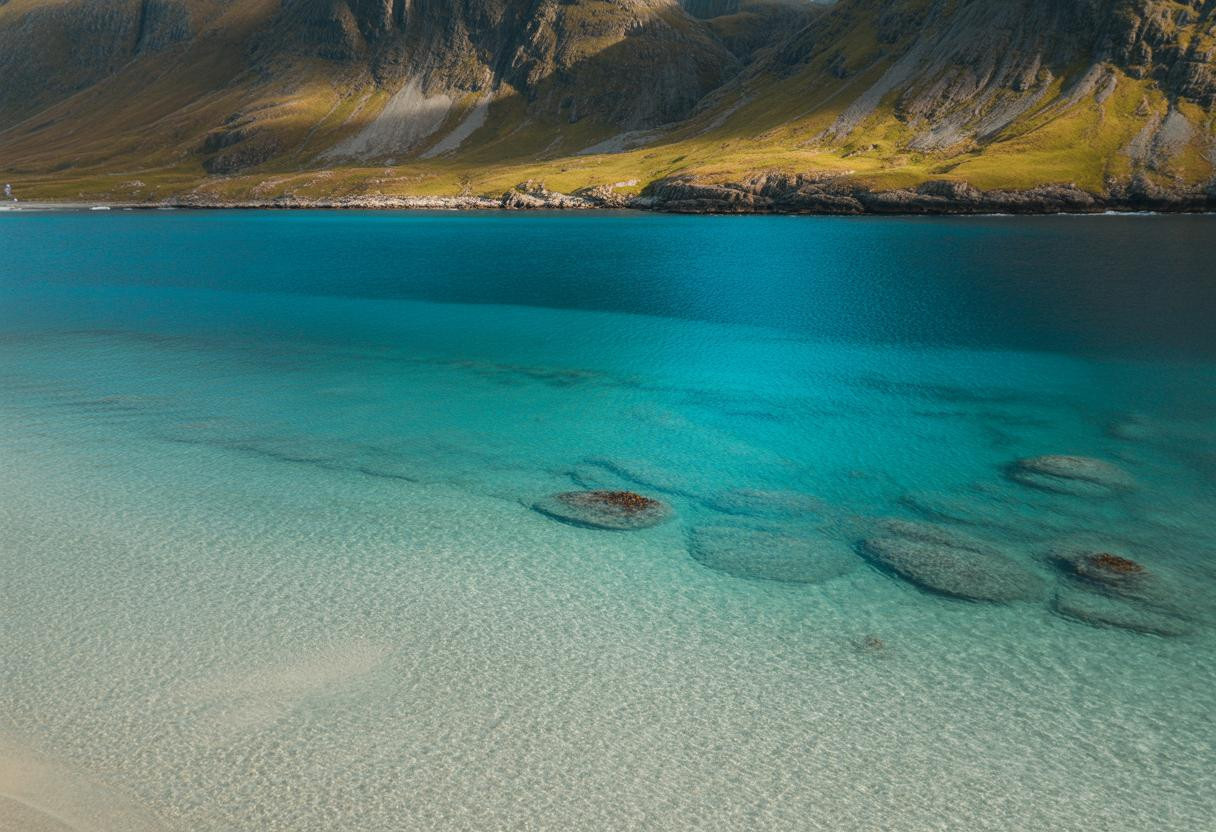When travel photographers share images of crystal-clear turquoise waters lapping against pristine white sand beaches, most people assume they’re looking at the Caribbean or Mediterranean. But these stunning shots are actually from Scotland’s remote islands, where an extraordinary confluence of natural forces creates conditions that rival tropical paradises thousands of miles away.
The Gulf Stream’s surprising gift to Scotland
The secret behind Scotland’s “hidden Caribbean” lies in one of nature’s most powerful ocean currents. The Gulf Stream transports 30 million cubic meters of warm water per second from the Caribbean across the Atlantic, fundamentally transforming Scotland’s climate and marine environment.
The Isle of Tiree, often called Scotland’s Hawaii, receives an astonishing 1,500 hours of sunshine annually – more than London gets. This remote Hebridean island maintains water temperatures that support activities you’d never expect in Scotland: world-class surfing competitions and beach days that stretch late into summer evenings.
Marine biologist Dr. Sarah MacLeod explains: “The Gulf Stream’s influence creates a microclimate around these islands that’s completely at odds with their latitude. We’re seeing tropical fish species establishing permanent populations in waters that should theoretically be too cold.”
Three factors creating Scotland’s tropical illusion
Oceanic clarity and mineral composition
Unlike coastal waters affected by river runoff, Scotland’s outer islands sit in deep Atlantic waters with minimal freshwater dilution. The Gulf Stream’s high salinity and consistent temperature create exceptional water clarity, allowing sunlight to penetrate depths that produce those coveted Caribbean blues.
The absence of major industrial pollution and limited agricultural runoff means these waters maintain pristine conditions. Some beaches on Harris and Lewis offer visibility extending over 20 meters underwater – matching conditions found in premium diving destinations worldwide.
Geographic positioning and wind patterns
Scotland’s western islands benefit from a unique geographic sweet spot. Positioned to receive the Gulf Stream’s full warming effect while being sheltered from harsh continental weather systems, they experience remarkably stable temperatures year-round.
The prevailing westerly winds, warmed by their journey across Gulf Stream waters, create microclimates that can be 5-8 degrees warmer than mainland Scotland just miles away. This explains why palm trees thrive in Scottish gardens along these coastlines.
Seasonal light dynamics
Scotland’s northern latitude creates extended daylight hours during summer months, with some islands experiencing 18+ hours of usable daylight in peak season. This extended exposure intensifies the warming effect of Gulf Stream waters and creates dramatic lighting conditions that photographers dream of capturing.
The combination of warm water, extended daylight, and clear atmospheric conditions produces sunsets and golden hour lighting that rivals any tropical destination, while maintaining comfortable temperatures for outdoor activities well into evening hours.
Planning your Scottish Caribbean experience
The optimal window for experiencing Scotland’s tropical conditions spans May through September, with July and August offering the most consistent Caribbean-like weather. However, research-backed approaches to sustainable lifestyle changes suggest that adapting your daily routine to island rhythms enhances the experience significantly.
Smart travelers are discovering that Scotland’s remote islands offer something the actual Caribbean cannot: genuine solitude and untouched natural beauty. While Caribbean beaches host thousands of visitors daily, you might have an entire Scottish beach to yourself for hours.
Essential preparation for island paradise
Weather-adaptive planning
Even during optimal conditions, Scottish weather can change rapidly. Pack layers and waterproof gear alongside your swimwear. The natural hydration alternatives during climate extremes become particularly valuable during unexpectedly warm spells that are becoming more common.
Sustainable tourism practices
These fragile island ecosystems require conscious protection. Choose accommodations that prioritize sustainable environmental practices that support biodiversity, and respect local wildlife habitats that make these islands special.
Technology and connectivity
Remote Scottish islands often have limited cellular coverage and internet access. Download offline maps, weather apps, and entertainment before arriving. Some eco-lodges are implementing innovative technological solutions for sustainable tourism that enhance the experience while minimizing environmental impact.
Scotland’s climate advantage is accelerating
Climate scientists predict that warming trends will make Scotland’s islands even more attractive as tropical alternatives over the next decade. While traditional Caribbean destinations face increasing hurricane activity and overtourism, Scotland’s remote islands offer a more sustainable and accessible paradise that’s becoming more tropical each year.
